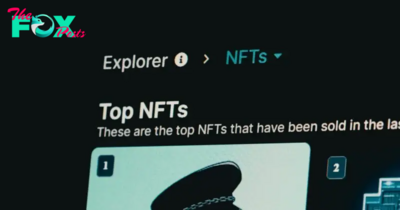Cryptocurrency
SBF’s Alameda Built Trading Reputation On BitMEX Leaderboard: Were Results Gamed And Faked?
Arthur Hayes’ BitMEX crypto exchange and derivative trading platform has a famous leaderboard that lists the most profitable traders on BitMEX. Only active and verified accounts are included on the leaderboard, BitMEX says. Unless a user has chosen to display their real name, account pseudonyms are used — words sometimes randomly strung-together and assigned by BitMEX, such as “Honeysuckle-South-Rib.”
Alameda Research, the bankrupt sibling trading firm of collapsed crypto exchange FTX, chose to use its own name on the BitMEX leaderboard, described as “an almost real-time list that gets fed with whatever changes the participants make in their buying and selling.”
Leaderboards have their benefits — such as lending credibility — and their limitations. In addition to ranking high on the BitMEX leaderboard, FTX had its own leaderboard where it ranked itself. The big limitation of the leaderboard is that it only covered the profit and loss of FTX. It ignored the trading across other exchanges, Jeff Wilser wrote for Coindesk. This is a limitation that FTX itself acknowledged.
“Suppose you got long on FTX and short on BitMEX,” said Nishad Singh, head of engineering at FTX who helped launch the FTX leaderboard in 2019. “If the price of Bitcoin moons or tanks, your overall profit would remain the same – but on one exchange you could be a star. Because of this limitation, Singh said, ‘it can’t possibly be a good holistic measurement of success.’” Singh said he viewed the FTX leaderboard as a “metric for fun,” and clarified that “we don’t endorse it as a super-serious thing.”

Black Americans Have the Highest Mortality Rates But Lowest Levels of Life Insurance
Are you prioritizing your cable entertainment bill over protecting and investing in your family?
Smart Policies are as low as $30 a month, No Medical Exam Required
Click Here to Get Smart on Protecting Your Family and Loves Ones, No Matter What Happens
Crypto exchange FTX filed for bankruptcy on Nov. 11 after worried customers made a bank run to withdraw assets. CEO Sam Bankman-Fried admitted that the company did not have enough assetsto meet customer demand. SBF claimed to have liabilities of up to $50 billion. He secretly transferred about $10 billion in customer funds without permission from FTX to his trading firm Alameda Research using a “backdoor” to avoid triggering accounting red flags, sources told Reuters.
Marcel Pechman, an analyst and writer at Cointelegraph, tweeted, “Hear me out: without @BitMEX leaderboard, Alameda Research would never been so big. @CryptoHayes, do you think SAM used to run multiple accounts long & short net zero just to get free ranking promotion?”
While some people bet on a price going up or down, FTX specialized in arbitrage or spread trading — defined as exploiting tiny differences in price between identical assets in two or more markets. The arbitrage trader buys the asset in one market and sells it in another simultaneously to pocket the difference. They bet on the spread between the two — on the relative price.
“We have to be open to the idea that the BitMEX leaderboards didn’t capture Alameda’s full profits and losses and they had losses and hedges on other platforms,” said The Moguldom Nation founder and CEO Jamarlin Martin. “Theoretically, they could have spreads and long/short positions but you see most of the wins on BitMEX and don’t see the losses at all. With spreads, you could leverage up as your positions would be less risky than a straightforward position but no one can see the loss/hedge side outside of BitMEX.”
People saw FTX on the BitMEX leaderboard doing really well for two years, but like Lance Armstrong, BitMEX is now accused of being involved in illegal performance-enhancing activity.
Why Alameda Research was ranked near or at No. 1 on the BitMEX leaderboard may not have been because they were great at trading. They may have bet that crypto was going to go up, and at the same time, they bet that crypto was going down. That would mean their true trading position may have been hidden — their losses were not calculated on the same board. They could have losses and wins if they had separate trading accounts on BitMEX that we don’t know about. If their specialty is arbitrage and going long and short simultaneously, they could have had an opposite position on another exchange.
FTX could have been gaming people from the very beginning where their losses on other crypto accounts couldn’t be seen. That was their specialty and it looked like a Ponzi scheme. They went to Silicon Valley investors and could say they were No. 1 on the leaderboard.
“I think there is a good possibility Alameda and SBF were manipulating systems from the beginning to the very end, ending in bankruptcy,” Martin said. “It’s possible they were talented spread/arb traders while misrepresenting their trading to raise capital and build their profile up, fool people. They could have the winning trades on Bitmex but have their hedges and losers on another exchange. The public and fans would only see the winning side of a 2-part spread/hedged position. This would be consistent with the Ponzi psychology, seeking out weaknesses and vulnerabilities in others to exploit.”
More than three years ago, Bitshine asked SBF_Alameda in a tweet, “How are you going to resolve the conflict of interest of running your own derivative exchange, AND actively trading against the market at the same time? People complain that @CryptoHayes trades against the market, yet FTX and your shop is out there.”
Crypto trader Tara Mac Aulay tweeted that she is a former Alameda Research employee who quit in April 2017 with a group of others, “in part due to concerns over risk management and business ethics.”
BitMEX founder Hayes and his co-owners were charged in October 2020 with making their crypto exchange — one of the largest in the world at the time — a haven for hackers and illegal transactions, helping clients to launder money. Manhattan Federal prosecutors indicted Hayes and he was arrested. Hayes avoided serving prison time after pleading guilty to the charges. Instead, the first Black crypto billionaire and innovator was sentenced to six months of house arrest, two years of probation and a $10 million dollar fine.
Some on social media said that BitMEX was targeted because it’s Black-owned. “The fact that bunch of old white guys at CFTC and FBI just shut down the most successful Black owned fintech in the world for violating the ‘Bank Secrecy Act’ has finally made me a believer in institutional racism” @DavidFBailey tweeted.
On Twitter, Bitshine pressed SBF more than three years ago: “I guess we’re just suppose to trust that you wont get preferential treatment on your own platform. Don’t get me wrong, as a semi quant trader, I enjoyed your videos and FTX is a step in the right direction. BUT, i think there needs to be a bigger discussion about this issue.”
In a Nov. 2 article, crypto news site CoinDesk reported that much of the balance sheet of Bankman-Fried’s trading firm Alameda Research is comprised of FTT, the native token of Bankman-Fried’s FTX. The FTT coin is relatively illiquid, meaning it’s difficult to trade without affecting the price.
The CoinDesk report showed a suspiciously close relationship between trading firm Alameda Research and its supposedly independent sister company FTX. While there’s nothing in the rulebook outlawing a trading firm from owning piles of its own token, it signaled to investors that Alameda was banked heavily on a coin its own sister company had created—as opposed to a truly independent asset, such as fiat currency or another crypto token—raising concerns that the firm was built on a house of cards, Fast Company reported.
These conflicts of interest go the heart of the fraud. Former U.S. Treasury Secretary Lawrence Summers has compared the FTX crypto to Enron, noting that the case is a classic fraud rather than being about the complexities of crypto regulation. Economist Nouriel Roubini described crypto and some of its major players as an “ecosystem that is totally corrupt.”
More than 4000 messages sent through the Connect to Congress app by CryptoLaw.com want SEC Chairman Gary Gensler investigated for his ties to FTX through MIT, where Gensler teaches and where SBF studied and graduated in 2014.
High powered lawyers Adam Moskowitz and David Boies filed suit on behalf of an FTX customer, Edwin Garrison. FTX was “a massive Ponzi scheme larger than the Madoff scheme,” Moskowitz alleged in an email to CNN Business. “FTX were geniuses at public relations and marketing, and knew that … [it] could only be successful with the help and promotion of the most famous, respected, and beloved celebrities and influencers in the world.”
It was possible to take a lot of risk on BitMEX but not show all their cards and game the ranking system all along with spreads or hedges in another account. People were going to give them money because They were No. 1 on the leaderboard or close to it and had credibility.
Images: BitMEX leaderboard, Oct. 12, 2019. Alameda Research had two public accounts on the leaderboard, putting them in 2nd place with 6,940 Bitcoin vs 1st place at 7,483 Bitcoin at the time of writing, https://medium.com/@robswc/bitmexs-mystery-whale-2122b5d3094f / Sam Bankman-Fried, founder and CEO of FTX, testifies at a Congressional hearing on digital assets and the future of finance, Dec. 8, 2021. (Tom Williams/CQ-Roll Call/Getty) / Sam Trabucco (Alameda Research)
-

 Cryptocurrency5m ago
Cryptocurrency5m agoThe Incrypted Team Will Host the Online Marathon 2024
-

 Cryptocurrency5m ago
Cryptocurrency5m agoCelebrity Meme Coins, Binance Coin Bull Run and Bitcoin’s Rally: This Week’s Crypto Recap
-

 Cryptocurrency5m ago
Cryptocurrency5m agoHulk Hogan Memecoin Slammed in $17 Million Crypto Rug Smackdown
-

 Cryptocurrency5m ago
Cryptocurrency5m agoSealana’s $3M+ Meme Coin Presale Enters Final Stage as Some Analysts Forecast Big Gains
-

 Cryptocurrency5m ago
Cryptocurrency5m agoCould This New Meme Coin Be the Next Pepe? WienerAI ICO Approaches $5M
-

 Cryptocurrency5m ago
Cryptocurrency5m agoDeFi.Gold and Babylonchain form a Strategic Alliance to Enable Bitcoin Staking and Yield on Other Blockchains
-

 Cryptocurrency5m ago
Cryptocurrency5m agoBotanix's Federated Sidechain Is Bringing Proof of Stake To Bitcoin
-

 Cryptocurrency5m ago
Cryptocurrency5m agoWhy Donald Trump Loves Bitcoin


























